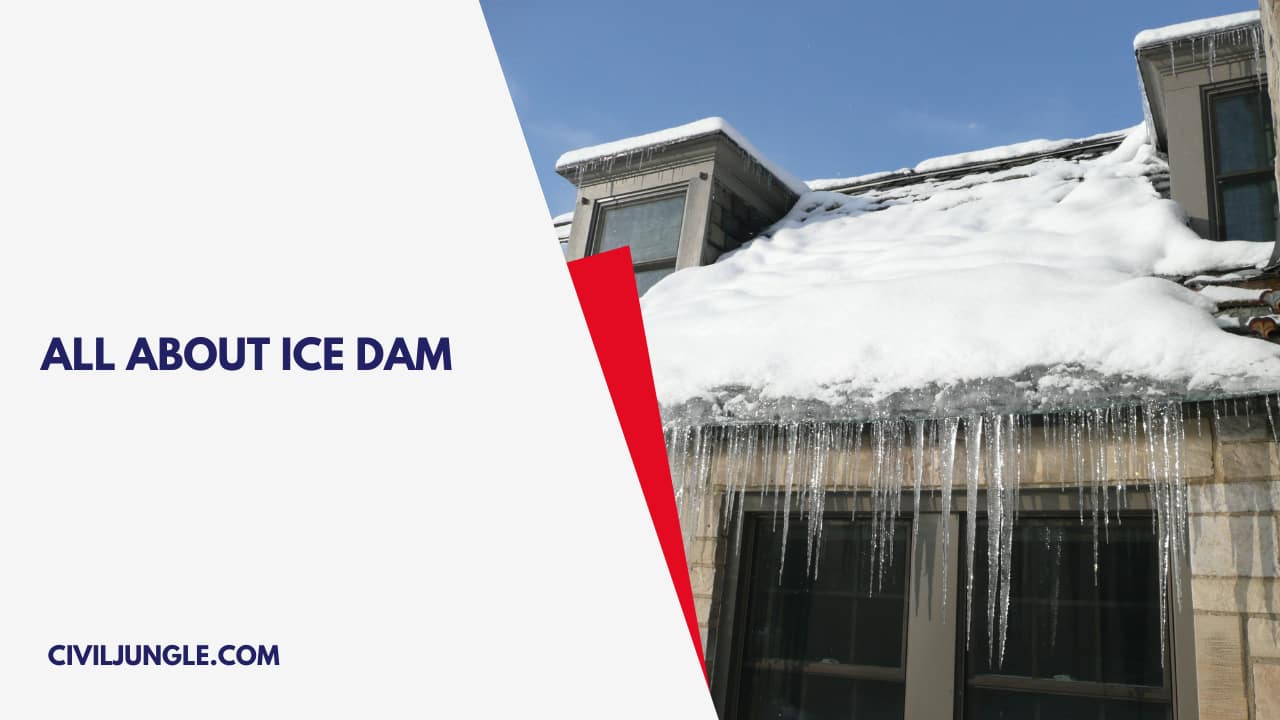
What Is an Ice Dam?
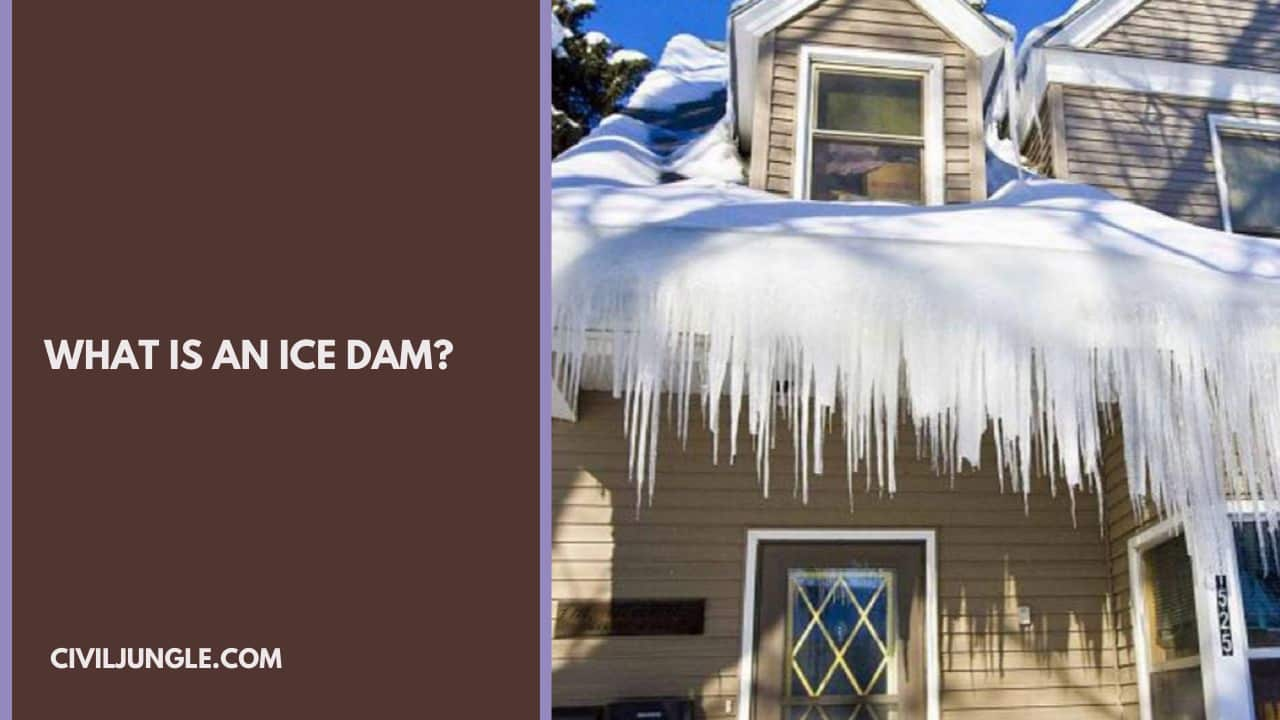
Generally, ices are very beautiful in nature, but they can also cause many problems like shingles to get loose, tear off gutters, and water can get back into the indoor portion of your house, necessitating the use of a gutter ice melter or techniques for removing ice dams from gutters.
So, here we fix those problems, prevention, and long-time repair process. In the winter region, Icicles are hanging from the eaves of the house and look very beautiful, but later it can cause some huge problems.
Due to excessively cold weather, snow is stored in the roof and freezes along the eaves, creating a dam-like structure called an ice dam. This situation causes serious and major problems, often requiring the use of ice melt for gutters or applying ice melt directly to gutters to alleviate the issue.
How to Remove Ice Dams from Roof?
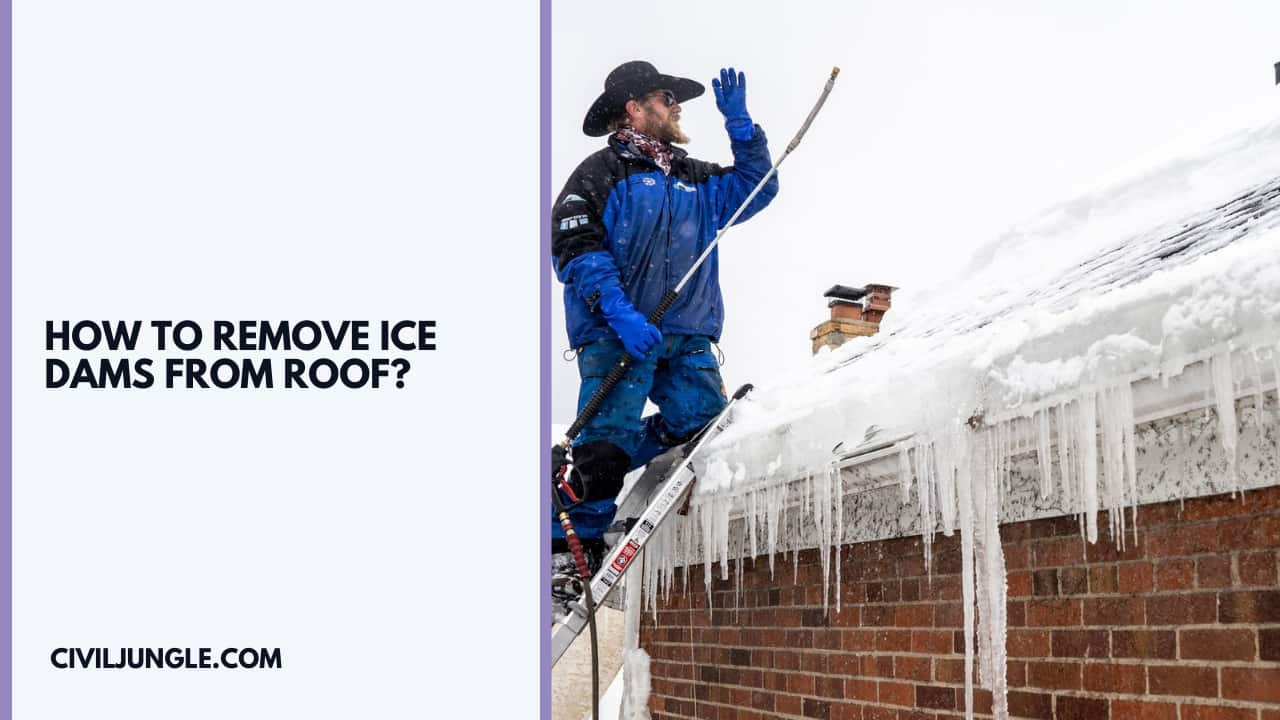
There are three methods that are widely used, those are.
1. Blow-In Cold Air
If we use a hammer, chisel, shovel, etc., then it will be very bad for your roof strength. For melting purposes, we salt, but it damages the same amount of the previous type. To stop the water leaking, we need to take a box fan and aim to the under portion of the roof where the leak is happening.
Then by cold air, the leakage water will freeze again and be converted to the ice again. Like this process, we can easily stop the leaking problem due to the ice dam.
2. Rake It
This is another process to rid of an ice dam; here, you can pull off the snow with a long-handled tool maintaining a safe distance. This is the easiest and economical method among all of these.
3. De-Icing Method
This is another process where we put a calcium chloride ice melter into the ice. Then we lay that hose to the roof because it can cross the ice dam and overhang the gutter.
After that, we push the calcium chloride melter by the long-handled tool. Finally, the calcium chloride melter melted the ice and cleared off with a water channel.
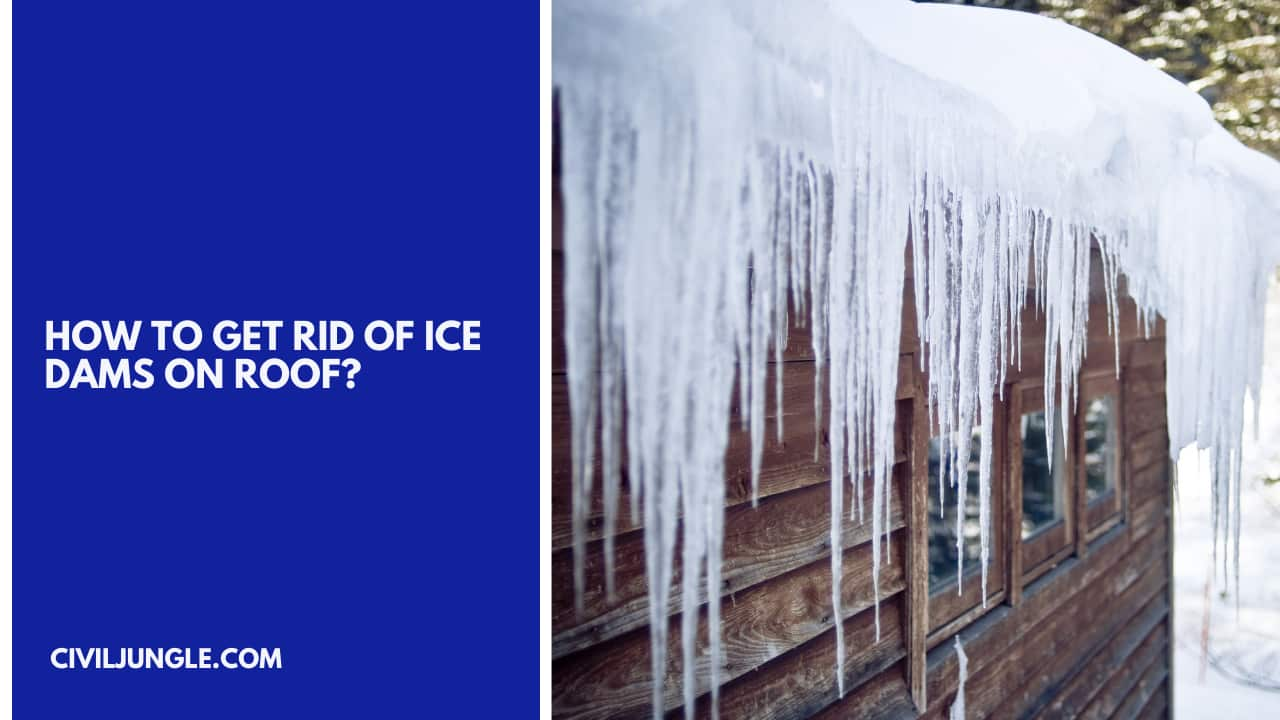
There are naturally five ways available to remove ice dams from the roof, including some how to remove ice dams diy methods for those who prefer to handle the issue themselves, those are-
1. Eliminate the “Fuel Source”
The creation of an ice dam is a natural and spontaneous process; if you leave it, then it will create more and more. So, to remove that ice dam, we need to apply the first step, which is removing the snow with the long-handled snow rake, which is extended up to 17 feet in length.
Then stand on the ground and scrape the snow down off from the roof but don’t use a ladder or don’t stand in the roof. Make sure that you must pull the snow in a vertical direction towards you, not in the horizontal direction. Wrong activities can damage the roof shingles.
2. Chip Away
This is the second step where you need an ice pick or awl. Here you can stand on the ladder, chip away the ice. Here, you don’t remove all the ice from the roof; you just need a channel for the3 melted snow and ice that can go through the gutters.
3. Use a Chemical De-Icer Product
Here, we use a urea fertilizer, ammonium sulfate, calcium magnesium sulfate, potassium chloride, etc. Then we need to place it on the top of the ice, which will melt the ice slowly, and the water will drain out slowly by the gutters.
4. Reuse of Old Stocking or Pantyhose
We need to fill these with chemical de-icer lay them on the top of the gutters, which melts the ice. This is a time-consuming process, and it needs to reposition the materials.
5. Spray Warm Water
This process is used for an instant solution that obtains hot or warm water in a pot, which needs to spray along the ice. You need to use it in the junction area unless that hot water turns cold and freezes again.
How to Stop Ice Dams in Gutters?
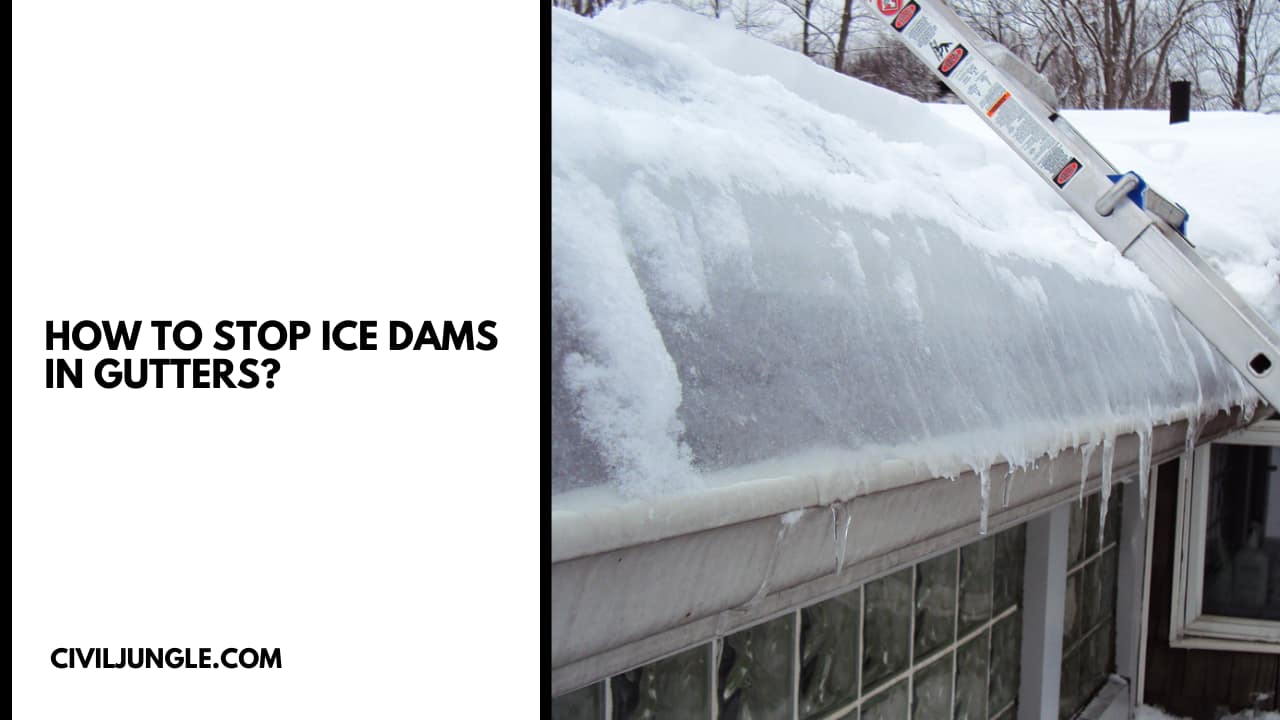
There are some processes available for ice melting in gutters, those are-
1. Roof Tablets
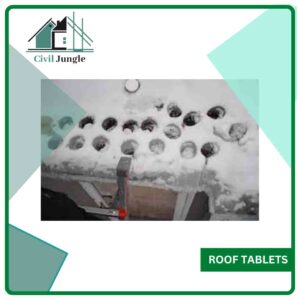
Roof tablets are very safe products that create channels to drain out the melted water. It is a safety process where you just create some holes into the ice where you put those tablets. It does not require too much money.
2. Pantyhose Filled with Salt
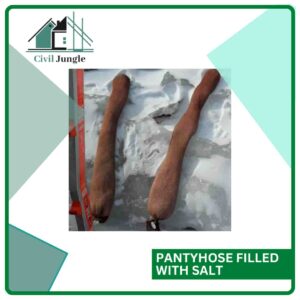
It is a safe method, and it takes too much time, but this is the best method among all of these. Plain salt is used in this process.
3. Heated Cables
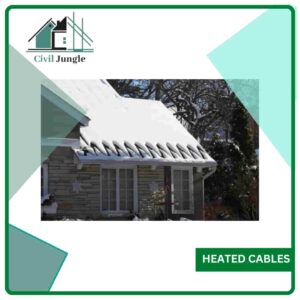
These cables can resist any further formation of an ice dam, but these create some hazards, so we do not recommend this.
4. Hot Water Hose
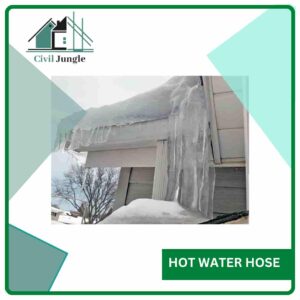
A hot water hose is used for an instant solution that obtains hot or warm water in a pot, which needs to spray along the ice. It is used in the junction area unless that hot water turns cold and freezes again.
How to Prevent Ice Dams on a Metal Roof?
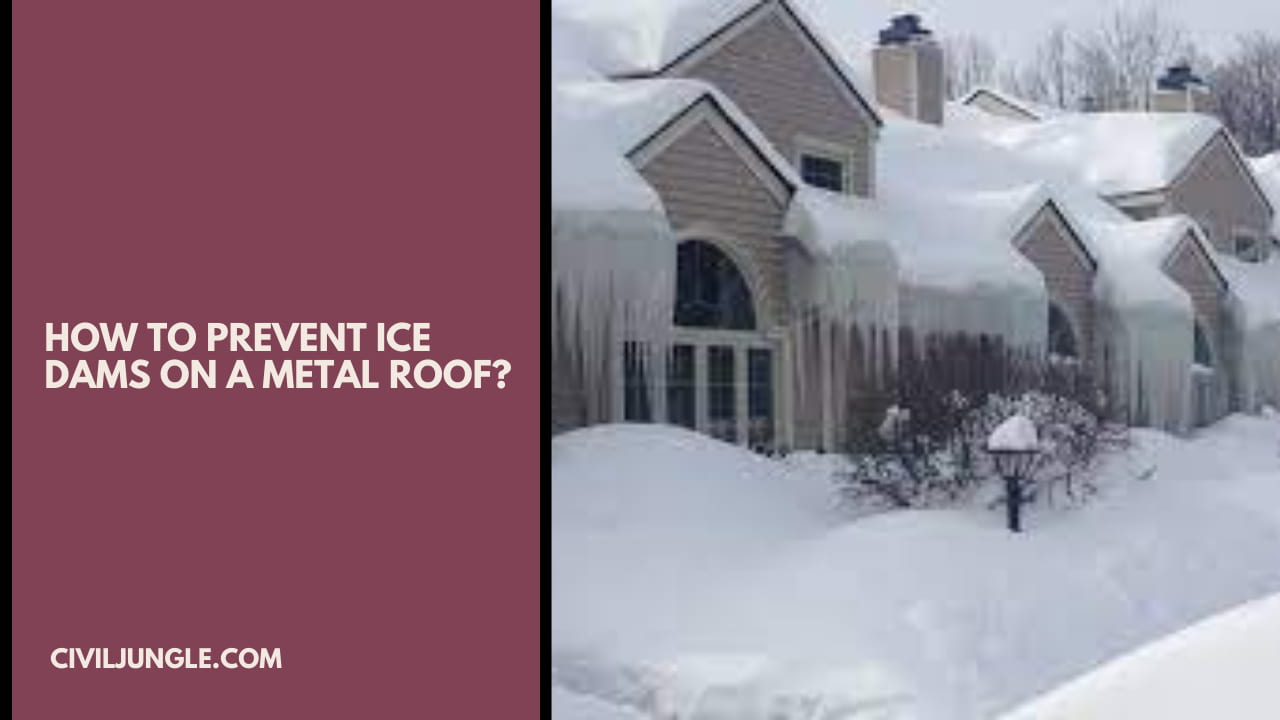
Here, Prevent ice dams on roof are as follows.
1. Prevention
The only prevention process of an ice dam is using a heated cable. Here, you can attach the roof edge in the zigzag pattern, but due to heated cables, roof shingles lift and causes minor leakage. You need to fix those cables before the bad weather otherwise it can not be fixed properly.
2. Fast Fixes
There are some methods available in the market, those are-
2.1. Ventilate Eaves and Ridge:
Generally, a ridge vent is paired with a soffit that circulates the air flows; the opening must be 1 square foot of opening for every 300 square feet. We need to place baffles in the eaves to provide airflow.
2.2. Cap the Hatch
A house fan or attic hatch is a major opening to escape the heat; so, you need to cover up those with foil-faced foam board to bind with aluminum tape.
2.3. Exhaust to the Outside
You need some care about all the ducts coming from the kitchen, bathroom, etc. are finished through the roof or wall but never through the soffit.
2.4. Add Insulation
An insulation process is required to keep the heat; you can contact some local building departments.
2.5. Installed Sealed Can Lights
Old style lights are good in the heat-generating so, it’s good to use. “IC” fixtures are also used in place of that lights; they are covered and insulated.
2.6. Flash Around Chimneys
Here, reduce the gap between the chimney and L-shaped steel flashing for insulation purposes.
2.7. Caulk Penetration
Electric cable and vent pipes are protected with fire-stop sealant need extra care for dirt because it prevents air circulation.
FAQ: Ice Dams
What Is an Ice Dam?
An ice dam is a ridge of ice that forms at the edge of a roof and prevents melting snow from draining off. As a result, water backs up behind the dam and can leak into the home, causing potential damage.
How Do Ice Dams Form?
Ice dams form when heat escaping from a home melts snow on the roof, which then refreezes at the eaves where the roof is colder. This creates a dam-like structure that traps water and can lead to leaks and other damage.
What Are the Signs of an Ice Dam?
Common signs include icicles hanging from the eaves, water stains on ceilings or walls, and damp or sagging insulation in the attic. You may also notice water dripping inside your home during or after a snowfall.
How Can I Safely Remove an Ice Dam?
There are several methods to remove ice dams safely:
- Blow-In Cold Air: Use a box fan to direct cold air at the area where the dam is forming to freeze the water.
- Rake It: Use a long-handled snow rake to remove snow from the roof while standing safely on the ground.
- De-Icing Method: Apply a calcium chloride ice melter to the ice dam to help it melt.
What Should I Avoid When Removing Ice Dams?
Avoid using sharp tools like hammers or chisels, as these can damage your roof. Do not stand on the roof or use a ladder to remove ice, as this can be dangerous. Also, avoid using rock salt or other corrosive de-icers that can damage your roofing materials.
How Can I Prevent Ice Dams from Forming?
Prevent ice dams by:
- Improving Roof Ventilation: Install ridge vents and soffit vents to allow proper airflow.
- Adding Insulation: Ensure your attic is well-insulated to prevent heat loss.
- Using Heated Cables: Install heated cables along the roof edge to prevent ice from forming.
- Regular Maintenance: Keep gutters and downspouts clear of debris.
Are There Any Diy Methods for Preventing Ice Dams?
Yes, some DIY methods include:
- Pantyhose Filled with Salt: Place these over the gutters to help melt ice slowly.
- Warm Water Spray: Use warm water to melt ice temporarily, though this is a short-term solution.
What Are Roof Tablets and How Do They Help?
Roof tablets are designed to create channels in the ice, allowing melted water to drain more effectively. They are safe and easy to use, but they may not be as effective in severe cases.
How Often Should I Check for Ice Dams?
It’s a good idea to inspect your roof and gutters regularly during the winter, especially after heavy snowfall. Look for signs of ice dams or potential issues and address them promptly.
When Should I Call a Professional?
If you are unsure about safely removing ice dams or if your home has significant damage, it’s best to consult a professional roofer or contractor. They can assess the situation and provide expert solutions.

